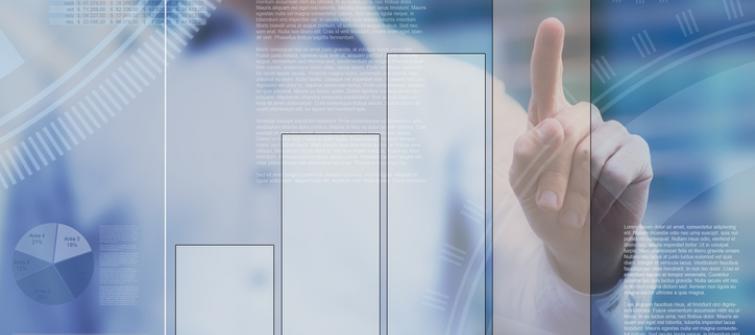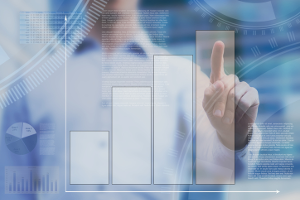Tools and Skills Needed to Transform Procurement


eProcurement platforms drive a process and are the foundation for digital procurement, but a technology platform alone does not a digital procurement organization make. It’s the data collected through the platform, and how you use it that will be transformative. In order to make optimal use of the data, the procurement organization of the future will require greater collaboration with IT to put a variety of new tools into production, as well as the services of data scientists and machine learning specialists who can build models to continually deliver new insights. In today’s guest post, Kristin Ruehle and Tom Fahey of Accenture, a Coupa partner, provide a rough guide to the tools and skills procurement organizations need to acquire for future success.
The world as we know it is moving faster—and procurement should keep up. We envision a not-too-distant future in which leading companies will use digital technologies—especially, analytics and artificial intelligence (AI) to create optimal experiences for those who work both in and with procurement.
Some may say that they’re already digital. “We have an eProcurement system that works really well. And we have lots of procurement tools in our Enterprise Resource Planning (ERP) system. What more do we need?” eProcurement is an essential platform.
But it’s just the start to being “digital,” and it can’t drive AI experiences on its own. Rather, it’s the process management foundation on which you build a host of other tools that use vastly expanded sets of information and data from myriad sources to power these new experiences.
The same goes for ERP. Most organizations have multiple ERPs and applications to support procurement processes. These are used to drive and control a process—a very important objective, especially in preventing risk to the organization. But these tools are rigid and can be cumbersome for users outside of procurement. And they lack inherent AI capabilities.
The fact is, procurement organizations and companies will always be concerned about compliance and control and driving purchasing through the appropriate channels. That’s why eProcurement systems and ERP applications will still be relevant in the future.
But, by focusing on the process, these systems don’t make things easy for stakeholders. Business has simply not caught up to translating the personal shopping experiences they encounter at home to the workplace. Even companies that have deployed buyer portals struggle with utilization because contracts and content are not being enabled at the onset. Stakeholders are not consistently finding what they are looking for. So the inevitable happens: They circumvent the process to get what they need.
New tools and skills are critical to delivering a superior procurement experience
When you prioritize the user experience, stakeholders are supported with the information they need when they need it—thus eliminating the guesswork around buying decisions. But how can you create this experience? It’s certainly not easy. Delivering intuitive, clean, simple and intelligent experiences that drive the correct behaviors requires a set of advanced tools that augment the existing control and compliance systems—and that few, if any, procurement organizations have in place today. These include:
- Tools to integrate data that sits in different applications scattered across the organization
- Data science tools to build and execute predictive models
- And automation software, natural language processing (NLP) applications, Machine Learning, and more.
These tools work together behind the scenes, invisible to users, to create an intuitive, easy experience for stakeholders—whether they’re procurement professionals or business users across the organization who take advantage of procurement services.
Procurement professional: Getting real-time pricing
Consider an example of a procurement team member who relies on an Intelligent Advisor to provide real-time pricing guidance for a new construction project. In this case, a sourcing manager is evaluating RFP responses from suppliers. The Intelligent Advisor provides real-time feedback on specific pricing elements (for example, that the response contains welding wage rates that are 30 percent over market prices). Ongoing data capture from projects fuels continuous updates to the algorithm in the background. That way, when a new construction project kicks off in another few weeks, the model will be updated as changes occur in the market and as previous project results are closed and tracked.
Making this experience possible are a variety of technologies running behind the scenes.
- Optical character recognition (OCR) coupled with NLP enables bots to extract the useful data from RFP responses and blend it into a standardized dataset.
- An advanced analytics model provides predictive insights on prices.
- An RPA bot gathers data, both internally (contracts, RFP results, etc.) and externally (government statistics, etc.) to feed new training data back into the model.
- A Machine Learning algorithm monitors user feedback, final RFP pricing, and external data feeds on an ongoing basis and to continuously improve the model’s outcomes.
The beauty of this advisor is that it assists sourcing leaders to immediately focus on how to use the data rather than spin their wheels gathering it. They are presented with the information they need on demand. And more importantly, they never engage with any of these non-procurement tools running in the background.
Business user: Booking travel
Another example involves an employee booking travel. The employee interacts with a Virtual Agent to get information on prospective hotels, airlines and rental cars, and in some cases, to book their trips directly with the agent.
Behind the Virtual Agent, natural language processing uses a cognitive algorithm to discern intent, coupled with predictive analytics to translate the request into a system command—i.e., “Requester needs information about buying in the Travel:Lodging, Travel:Flights, Travel:Rental Car categories.”
A Virtual Agent then uses NLP and NLG to ask for and process dates, times and cities. Robotic Process Automation (RPA) works behind the scenes with the existing travel booking portal to gather all the options, and a predictive analytics model selects the top three options (for example, balancing airline, time and price when booking a flight). RPA then buys the ticket and sends the confirmation to the user.
But having these tools isn’t enough. The simple fact is, to implement and use these advanced tools to create superior user experiences, you’ll need much more than functional excellence and procurement experience (which is still critical to reimagining new ways of operating in a digital world). You’ll need data scientists and AI specialists who know how to build and apply models to manipulate data and tease out different correlations. You’ll have to have category and business experts to determine whether these correlations are significant or simply coincidences, as well as design professionals to develop compelling experiences that make stakeholders want to use the tools provided rather than find ways to avoid them. And you’ll need IT professionals who know the technology tools and software applications, as well as how to integrate them to create a solution to a problem that actually adds value.
The fact is, the future procurement organization will be fueled by a set of integrated skills that accompany and augment procurement expertise—and that typically won’t reside in the procurement function.
The future of procurement is nearly here
Imagine a day when stakeholders have everything they need at their fingertips, available with the push of a button. “Hey, Alexa, get me the best prices and vendors for the steel we need for that warehouse expansion we’re doing in Ohio.” You’ll be able to not only make the best decisions, but also cut weeks from the sourcing process. That’s where procurement is headed, and it’s not too far away.
To get there, companies need to build on the investments procurement has already made. For instance, eProcurement systems won’t go away—they’ll still be important in the future. But they will no longer be the primary user interface. Instead, user interactions will be simple, intuitive, and intelligent—driven by a combination of new advanced tools and new skills working behind the scenes to deliver “instant-on” procurement.
Putting all the necessary pieces in place, however, won’t be easy. The pace of technology evolution can be challenging for any one company to keep up with, and the sheer scope of new tools needed will require significant investments that companies may find difficult to fund. As well, plugging the skills gaps with the new talent needed will be tough given the fierce competition from IT behemoths for data scientists, design professionals, and other experts.
The good news is that you don’t have to build all these capabilities yourself. Emerging solutions are available that bring together the data, tools, and skills necessary to digitally transform procurement more quickly and cost effectively. These solutions can kick-start procurement’s efforts to become truly digital—and bring the future of procurement closer to today.
Kristin Ruehle is Managing Director, Procurement Business Process Outsourcing. Tom Fahey is Business and Technology Innovation Principal Director. This article previously appeared on the Accenture Intelligent Operations Blog.